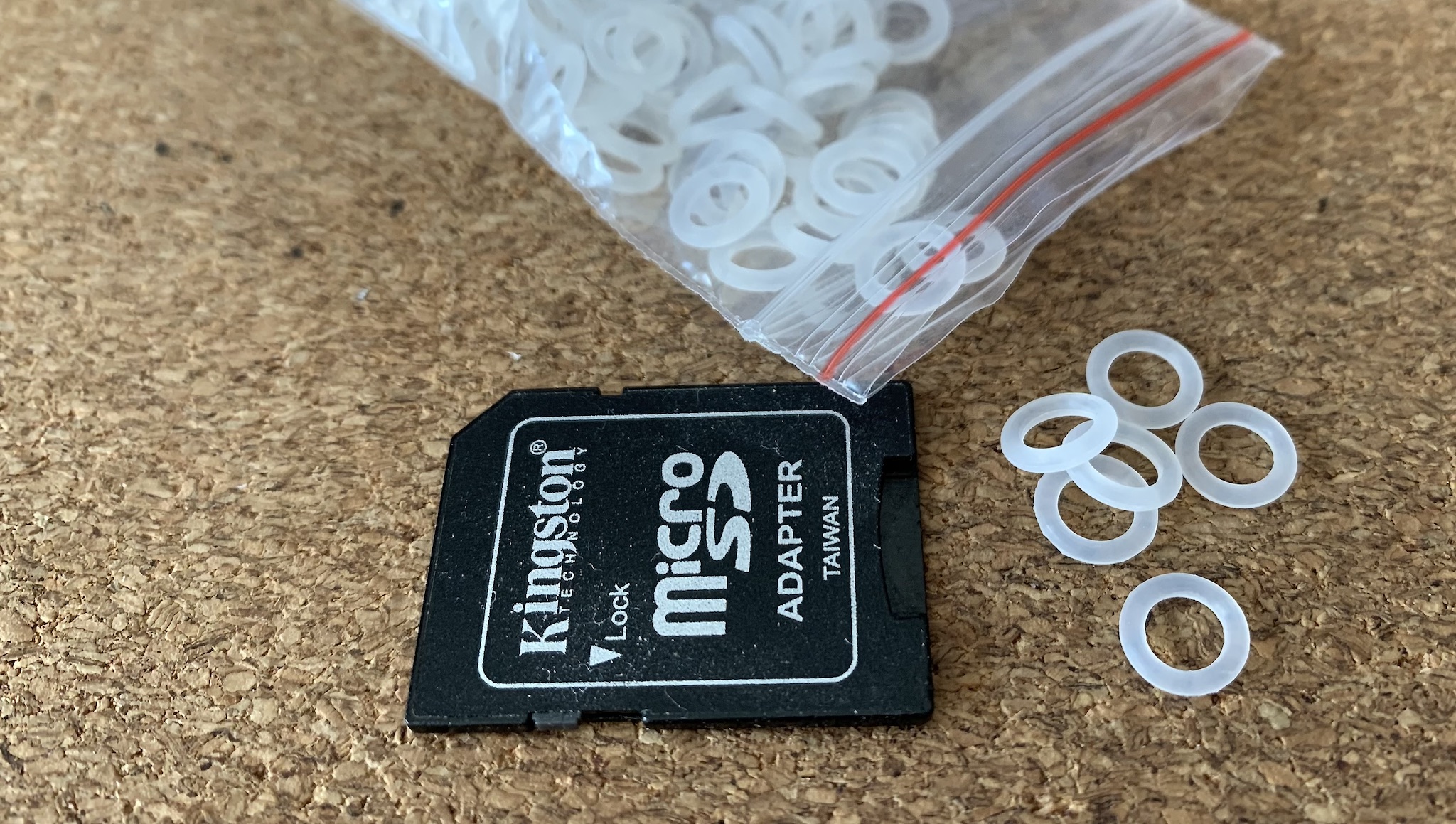A few weeks ago, as part of one of my keyboard side quests, I got myself an artsey.io 8-key Bluetooth keyboard, which might seem a tad extreme where it regards both minimalism and practicality.
And it is:

I did it mostly for the challenge: I’ve long had a fascination for alternative input methods (especially portable ones), and I have been wanting to try a chorded keyboard for a while.
That I could get a minimalistic Bluetooth one that has the same footprint of a credit card only added to the charm, and the BlueHand in particular has a genius design where the case itself (the embedded standoffs) completes the circuit between the PCBs, so it feels like a product instead of a gadget.
Plus all of it is pretty extensively documented, which is a treat.
Teething Issues
The board came pre-flashed (it is based on ZMK firmware), but I had a couple of issues with assembly:
- I managed to strip two of the hex screw heads (no biggie)
- The
Tkey didn’t work, likely because the bottom plate (which is a thinner PCB) had a failed pass-through.
Fortunately the schematics are readily available, so figuring out what had happened and soldering a bodge wire directly to the microcontroller was a fifteen-minute fix.
Then I had to start learning the layout, which looks like this:

I picked a left-handed layout because despite being predominantly right-handed it makes more sense to type with the hand I’m not using a mouse or trackpad with.
The layout itself is pretty straightforward and I was able to get the hang of it in a couple of days, although I wish some chords were swapped (like G and U, which make more sense for me the other way around). But I’ve stuck to the default layout for now.
Typing Experience
We can get that right out of the way: No, it isn’t in any way faster than a regular keyboard–quite the contrary, in fact, although most of my issues with it stem from how hard it can be to quickly move from one chord to another and some more common symbols (like M, D and space) requiring more keys than seldom used ones like Y.
As to writing in Portuguese, thanks to the Apple US keyboard layout, I can type everything I need (including accented characters) on the BlueHand, which is pretty nice even if it’s a three-step process (chord the modifier, chord the accent key, then chord the letter).
vim is… a little harder. But it’s surprisingly workable, and I can always use another editor if I need to (on the iPad, I tend to favor Textastic).
But, in general, it’s stuck with me. I do find that coming back to the BlueHand after a few days requires me to go through a bit of a warmup before some chord combinations felt natural again, but that’s to be expected.
Modding
Mechanical keyboards are tinkering magnets, even with just eight keys, and this was no exception.
The first tweak I did was adding rubber o-rings under the keycaps, which not just made things quieter but also had some effect on key travel, making it slightly easier to chord some sequences.

The second tweak was replacing the brown Kalith switches it came with.
I went with nicer, much quieter silver ones, which have a much lower actuation force and make it easier to chord. This improved my typing speed somewhat, at the expense of some initial accuracy as I adjusted to more sensitive keys.
I also considered going all out and modding the switches themselves to reduce key release clicking, but have held off on that for the moment because, well, I do have a life.
However, that may still happen since the BlueHand is perfect for late night scribbling in bed, and it is just a tad noisier than my iPad Pro’s keyboard cover.
Endgame
But right now I am pretty happy with it: it has six Bluetooth profiles (which, for a change, is enough for all my devices), I am already able to type unhurriedly (and mostly unaided) on it for longish stints, and the only thing I would change (physically) would be to make it as thin as the Apple Magic Keyboard, since even with the new switches I would prefer that my fingers traveled less.
If someone ever comes up with an ultra-thin, membrane version of this, I’ll be all over it.